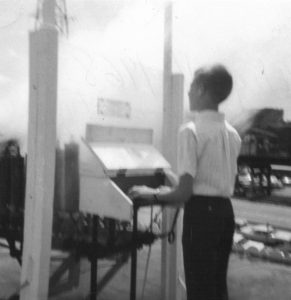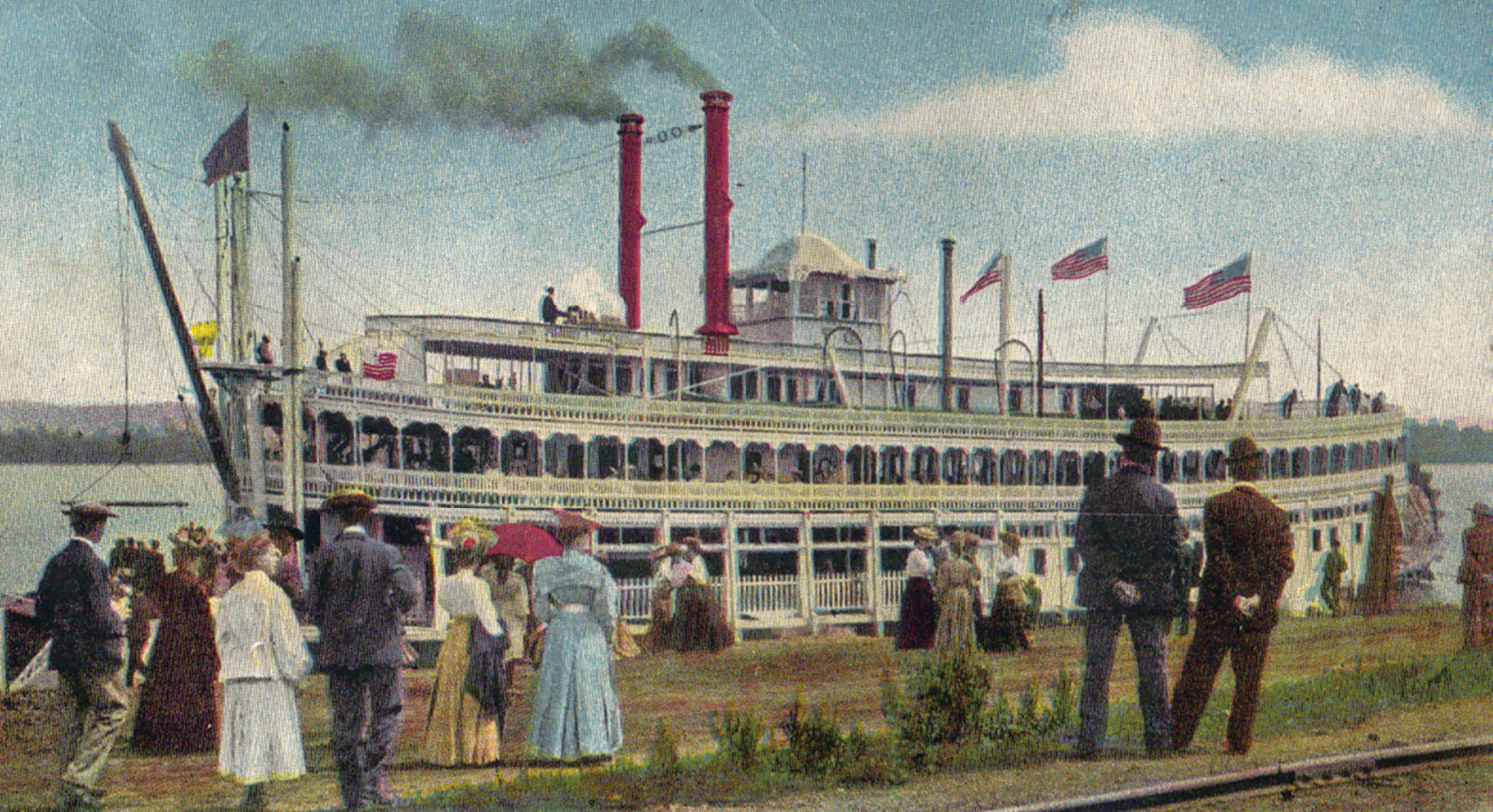In the heyday of excursion steamboating, this time of year was the peak season for the riverboats to prowl the inland waterways, offering daytime cruises as well as “moonlites,” with the boat’s decks outlined in hundreds of white lights and a band or orchestra for dancing. Traveling publicity agents visited river towns weeks in advance, distributing handbills and tacking up colorful posters emblazoned with all the necessary information and a huge rendering of the riverboat.
By far, the best harbinger of the boat’s arrival was the calliope. Often, well before the gingerbread-laden and flag-bedecked vessel hove into view, the stentorian sounds of the “steam organ” were audible for miles.
Patented in 1855 by Joshua Stoddard, of Worcester, Mass., the calliope was originally devised to replace or augment church bells. The frigid New England winters soon put the kibosh on installing calliopes in belfries!
This week’s Old Boat Column main image features the Streckfus steamer J.S., at the Peoria landing; away aloft, on the texas roof, forward of the smokestacks, the “perfessor” (calliopist) is serenading the waterfront as a crowd gathers and, hopefully, will purchase tickets for a boat ride.
The Steamer J.S.
Built in 1901 by the Howard Shipyard at Jeffersonville, Ind., for a contract cost of $13,450, the handsome sternwheeler was named for Capt. John Streckfus. The wood-hulled vessel was 175 feet in length by 33 feet in width.
Originally designed for freight and passenger service, the boat operated as a morning packet from Davenport to Clinton, Iowa, on the Upper Mississippi River; nighttime excursions were offered from Davenport and Rock Island. Streckfus eventually converted the vessel solely into excursion service. While the vessel was returning from a Saturday outing to La Crosse on June 18, 1910, fire broke out aboard the steamboat in the vicinity of Bad Axe Island. Allegedly, a rowdy passenger who had been incarcerated in the brig (located in the hold) set the blaze; he lost his life, along with a lady passenger who panicked and jumped overboard. All of the other passengers and crew were safely evacuated to shore on the island and rescued by the rafters Harriet and North Star. The J.S. burned to the waterline and was a total loss.

A Golden Anniversary
Fifty years ago, on Sunday, August 11, 1968, this writer (age 14) first played the calliope aboard the steamer Belle of Louisville.
For many months I had practiced rollicking river tunes on the piano with the 32-note calliope keyboard compass blocked off with masking tape. Through the kindness and courtesy of Capt. Charles Brasher and calliopist Shirley BurwinkIe, I shall never forget the awesome thrill of stepping up to the console for my cally-ope concert debut! I pressed my trembling fingers down on the brass keys and a blast like thunder rolled over the riverfront, amidst clouds of snowy white steam, as I began to play the old excursion boat favorite, “In the Good Old Summertime.”
Three years later, Capt. Brasher offered me the job and I would spend six wonderful seasons aboard the Belle during summer vacations from high school and college.




